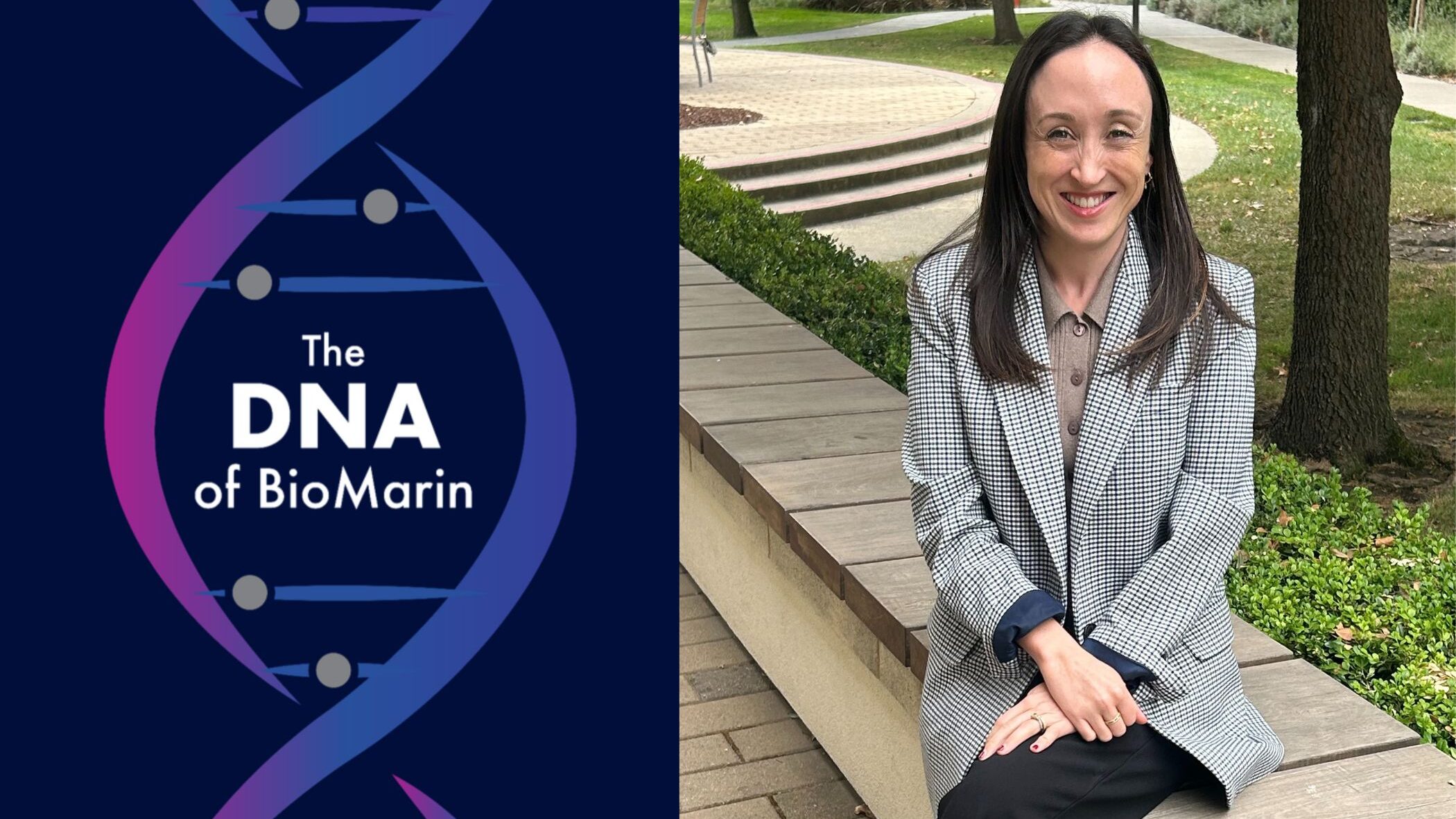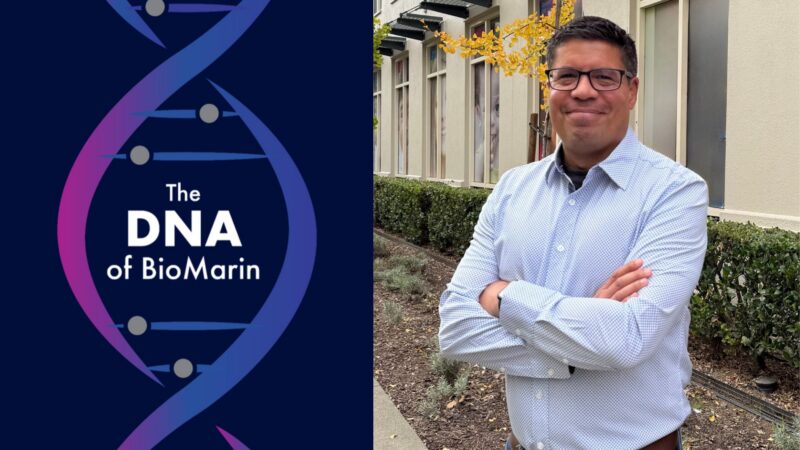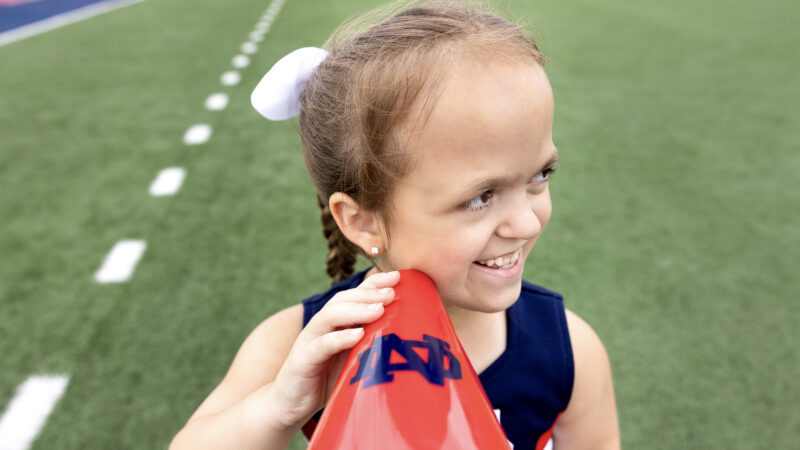From Patient to Policy Advocate: A Journey Rooted in Urgency and Hope
October 22, 2025
Lynsey Chediak’s passion for patient advocacy is, quite literally, in her DNA. Her journey into health policy began not in a classroom or corporate office, but as a child navigating life with a rare genetic bone condition called arthrogryposis that renders joints permanently bent or stiff, creating contractures.
Unlike many of her childhood peers, she spent her early years attending research symposiums and sharing her story with doctors and researchers.
“I was convinced that if I told enough people, maybe someone could help me – that with increased awareness of my condition, someone might develop a treatment,” recalls Lynsey.
Now, as BioMarin’s Associate Director of Government Affairs, Lynsey brings that lived experience to the forefront of her work. Her personal story fuels her passion for advocacy, policy reform and storytelling that elevates the voices of rare disease communities. Whether she’s engaging with state legislators, supporting patient-led coalitions or helping shape internal initiatives such as the People with Disabilities (PwD) Employee Resource Group, (ERG), Lynsey brings her own brand of commitment to building a future where children born with rare genetic conditions have access to care, understanding and hope from the very beginning.
Lynsey shared her story in our employee profile series, “The DNA of BioMarin,” which draws inspiration from the four bases that constitute DNA – A (adenine), T (thymine), C (cytosine) and G (guanine) – by asking employees to reflect on the role that Aspiration, Translation, Connection and Gratitude play in their everyday work.
Learn more about how Lynsey’s unique experience living with arthrogryposis fuels her sense of urgency as an advocate for others born with rare genetic conditions.
ASPIRATION
How did you get your start in the biopharma industry? What do you aspire to accomplish through your work at BioMarin and in your career?
I entered biopharma as a patient. At 2 years old, I was diagnosed with arthrogryposis, which is caused by a de novo genetic variant, meaning it developed spontaneously and no one in my family has it. At age 5, I participated in research symposiums at Shriners Children’s Hospital in Sacramento. I was fascinated by the strong partnership between health systems, researchers and biopharma companies all working together to find treatments for rare genetic conditions. I began telling everyone at Shriners about my condition, hoping someone could help or raise enough awareness to spark treatment. ‘I haven’t met anyone else who has it,’ I’d tell them. ‘It causes stiffness and excess fibers in all my joints. My legs just won’t straighten. I also have clubbed feet and a bent neck. Have you heard of it?’
When I started school, I quickly realized my mobility was different from my classmates, and I waited 10 years for a surgical intervention. At 15, I underwent a procedure that allowed me to walk upright for the first time, which was truly a life-changing moment.
I’ve had 34 orthopedic surgeries, including bone transplants and a full neck fusion, because, unfortunately, a medicine has yet to be developed.
At BioMarin, I strive to leverage my own experience to help create a better future for all children born with rare genetic conditions. I’m inspired by our scientists who are conducting critical research for future patients. My piece of the puzzle is advocating for policies that expand access to diagnosis and treatment, aiming to ease some of the uncertainty that comes with rare conditions.
“At 2 years old, I was diagnosed with arthrogryposis, which is caused by a de novo genetic variant, meaning it developed spontaneously and no one in my family has it.”
CONNECTION
What role does connection play at BioMarin?
My lived experience fuels my urgency to support BioMarin’s mission to translate genetic discoveries into medicines that make a profound impact on the lives of patients. It’s motivating to see that the same sense of urgency exists in both the communities we partner with and in my colleagues. This connects all of us in our daily work.
Earlier this year, I helped launch the Skeletal Conditions Advocacy Coalition, a space where patient advocates unite to drive policy change. Through this coalition, I’ve met two other powerful women advocates who have also undergone limb lengthening like me. Meeting others who share this experience has helped me process my own journey.
Witnessing how invested my colleagues are in supporting people with rare conditions has also deepened our connection. One of our recent state briefings held especially personal significance for me. Beneath a long dress, I was concealing stitches from a recent surgery, uncertain how legislators might respond. But my team’s quiet solidarity, both with me and the other advocates who spoke, gave me strength.
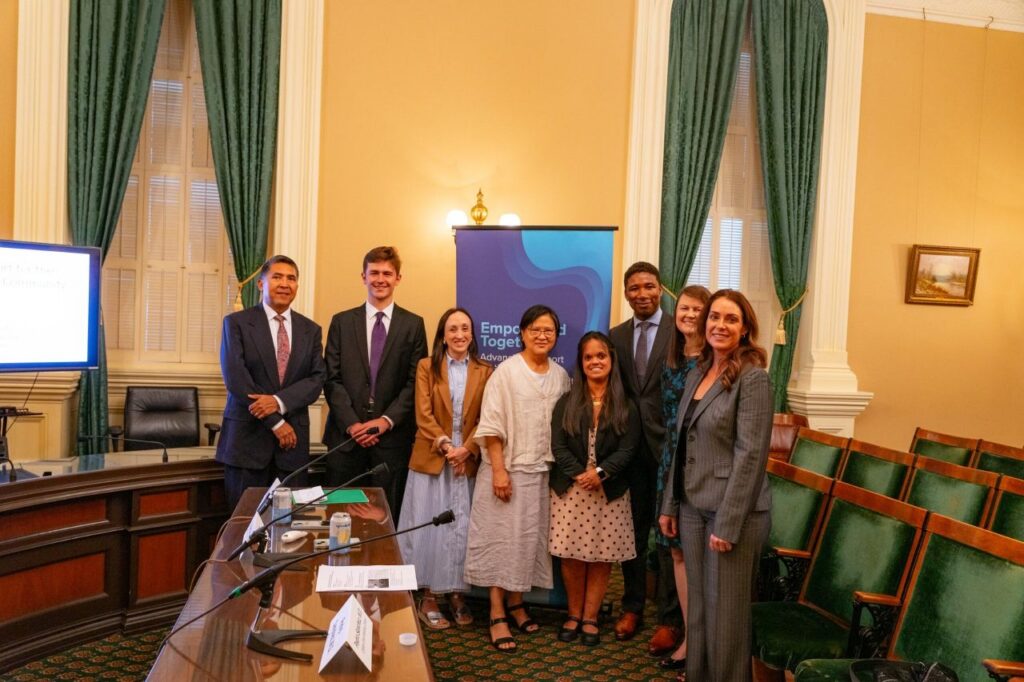
Lynsey (third from left) joined advocates and colleagues from BioMarin in supporting the Skeletal Conditions Advocacy Coalition at the California State Capitol in Sacramento.
GRATITUDE
Tell us about something you’re grateful for in your career, and why.
I’m grateful to bring my full identity to BioMarin – something I haven’t always been able to do in other settings. The PwD ERG has been a huge part of that. Recently, when our ERG was brainstorming activities, we decided to host a celebration on campus for the 35th anniversary of the Americans with Disabilities Act in July. I was nervous the day of the event and worried that no one would be interested in learning about the ADA or why it’s important. To my delight, the event was standing room only.
I felt immense gratitude that my colleagues were willing to learn about a piece of legislation they might not have known much about, but that had played a crucial role in my life and the lives of so many people in America who are affected by disabilities.
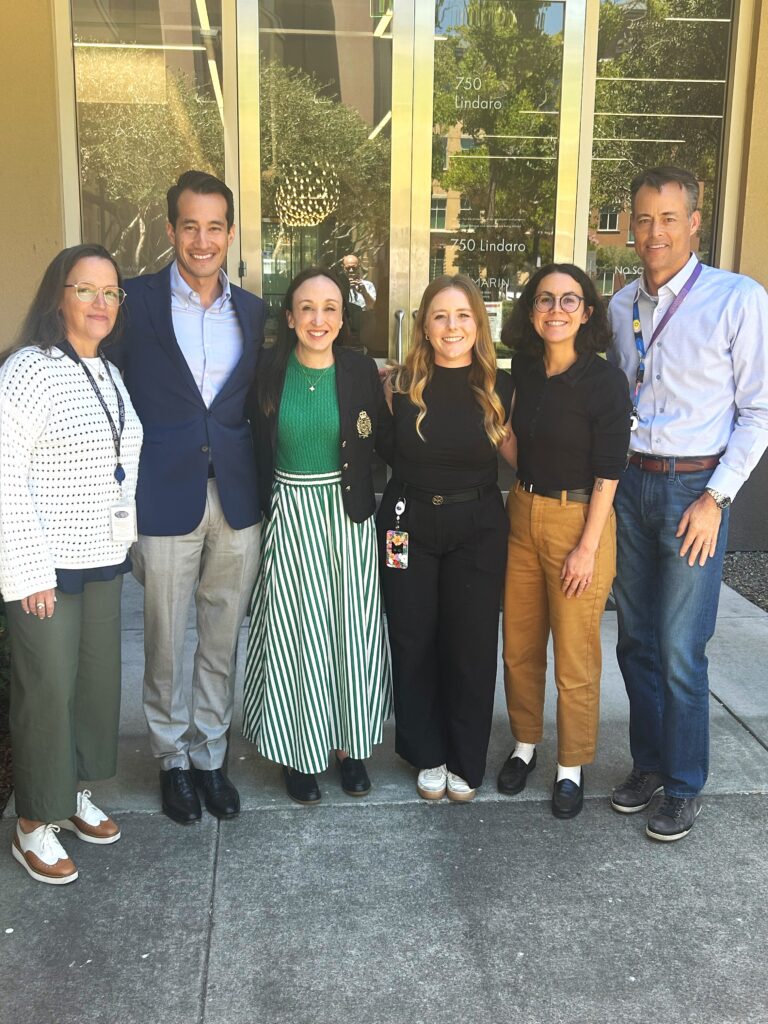
Lynsey and the PwD ERG held an event commemorating the 35th anniversary of the Americans with Disabilities Act.
TRANSLATION
How do you hope your work will translate into impact for the patient communities BioMarin is working to support?
A big part of my role is to advocate for health policies that expand access to diagnostics and treatments for patients and their families affected by rare, genetic conditions. My hope is that by removing existing access roadblocks, patients and families in the future won’t have to face the same challenges that otherwise are accepted as the norm. If our efforts help streamline this journey, that’s success.
This year, I contributed to efforts that led to legislative progress in Texas and New Mexico to improve access to rare disease treatments. Texas committed hundreds of millions of dollars to modernize newborn screening, ensuring faster diagnoses for impacted infants. New Mexico eliminated prior authorization by health plans as a requirement for people to receive FDA-approved rare disease therapies, reducing delays and stress for patients and their families. I’m grateful to have the opportunity to support these small, but impactful legislative changes to help ease the patient journey.
The future I want to see is every child born with a rare genetic condition spending time enjoying their childhood and chasing their dreams, rather than navigating health systems.
“The future I want to see is every child born with a rare genetic condition spending time enjoying their childhood and chasing their dreams, rather than navigating health systems.”
